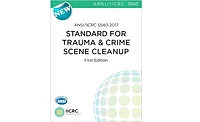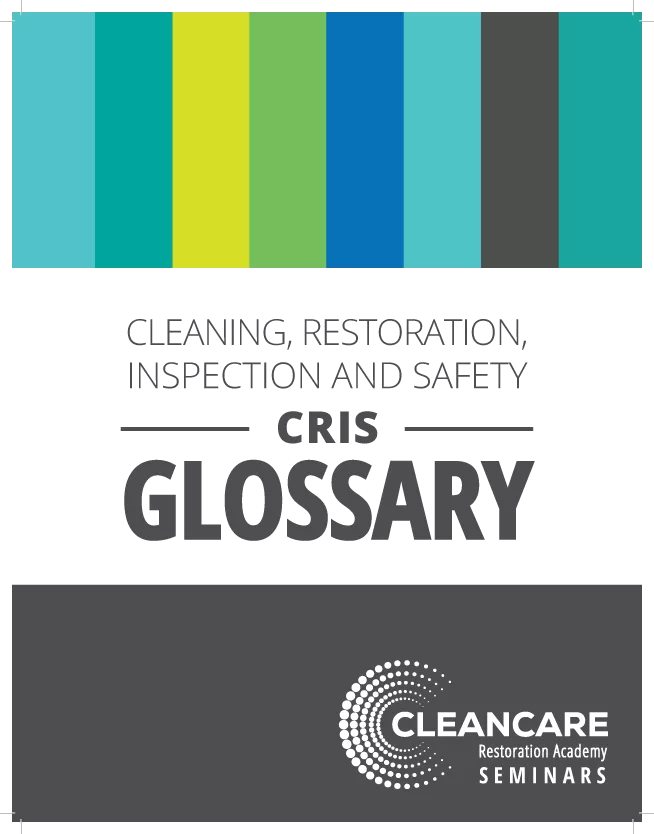Crime Scene Cleaning: Education is Everything
It’s hard to say when something becomes outdated, or “old-school,” as well as the exact point in time when it becomes obsolete. It tends to sneak up on us and before we know it, we are doing something “the old way” or using outdated technology. As fast as technology is changing our world, it’s hard to keep up.
The crime and trauma bio-recovery market is no different. It’s easy to do things the way we always have. Enlightened company owners are realizing that meeting regulatory compliance such as OSHA, DOT and health department regulations is a minimum criteria just to conduct business. But it doesn’t teach you how to do the work. No, it is the education and skill set of the owners and technicians that create successful enterprises. The more education and training they have, the better they can compete, especially in such a narrow market niche as ours.
Fortunately, thanks to business coaches, training schools, trade journals (like this one), vendors and research papers, many in our industry have been able to make huge leaps in their markets through the implementation of new technology and processes. And they’re reaping the rewards.
As an instructor, it’s exciting to see the growth, but more importantly, to experience the satisfaction of helping to increase the level of sophistication of our service providers. While our original niche is becoming more educated regarding the cleaning and disinfecting of blood and its related pathogens, many crime and trauma scene cleanup companies are also taking training in order to offer services such as meth lab cleanup, human and animal waste removal and decontamination, food-related sanitizing, allergen reduction and environmental disinfection.
Not only are companies reaping the financial benefits, they are also better able to defend their actions from a more informed and critical public. Fear of complaints and legal claims from overlooked contamination, improper cleaning, the use of improper or ineffective disinfectants, off-label chemical use, use of non-certified PPE, cross-contamination and non-justifiable cleaning and disposal protocols are motivating even the most reluctant companies to upgrade their knowledge base. As a result, quality is improving and complaints are down.
Through independent research studies published by many of the cutting edge manufacturers, readers have been able to make informed decisions on items and subjects that weren’t even on their radar previously. The simple act of cleaning has even received a make-over. The use of adjunct tools that improves the amount of organic load that is removed not only creates a cleaner surface, but saves time while doing it. The use of high-flow fluid extraction or swapping out cotton for microfiber can make a huge difference in the cleaning process because we now know that the basic cotton rag is a poor method of removing contaminants. Older technology has gotten an upgrade, too. The use of low vapor steam to access nooks and crannies and sanitize without the use of chemicals has been used for years. Now, however, new research has shown how recent modifications (i.e., nano-crystalization) has enhanced the effectiveness of some steam vapor machines so much that they are now qualified as a chemical-free disinfection device by the U.S. EPA, opening new markets for our technicians.
Recognizing and being able to evaluate new disinfectants has become an important skill for the trained technician. Recently, we have seen the emergence of disinfectants that out-perform anything we had just a few years ago - and can do it with little or no environmental impact to boot. In order to pick the right ones, some training schools are providing in-depth sessions on the chemistry of cleaners and disinfectants, including critical decision-making skills regarding the handling of specific soils and pathogens. New trainees are finding that there is a great deal to know about the proper application of sanitizers, disinfectants and sterilants. In order to be assured that these antimicrobials are actually doing what we expect them to do, many factors including the pre-application process, potential environmental interference and dwell times all must be considered. Even understanding how pH plays a role in the proper cleaning of target contaminants, as well as knowing how the residue of a cleaning chemical can impact disinfection, have changed the game plans of many bio-recovery companies.
Our understanding of the microbes themselves has also improved, making us technically superior technicians. Knowing the difference between vegetative versus sporulating bacteria, or why lipid viruses are easier to kill than non-enveloped viruses make us better at knowing our enemy and what weapon (disinfectant) to use.
Finally, we are seeing more companies utilizing the Adenosine TriPhosphate (ATP) meter as a cleanliness-confirmation tool. By swabbing newly cleaned and disinfected surfaces, today’s technicians can not only quantify how clean it is, but can download the results to a computer and print out the documentation.
We, as an industry, are continuing to strive to be experts in our field and stay on the cutting edge of technology. Properly trained technicians know how to differentiate between a phenol, a quaternary, an iodophor, a halogen, a peroxide, an alcohol, a paracetic acid, a chlorine dioxide and other main ingredients of the most common disinfectants (as well as the pro’s and con’s of use). Technicians are learning to use terms like obligate anaerobe, bio-load, fomite, vector, log-reduction, prion, viron and macrophage. They are continuing to learn as much as possible about the potential pathogens that could be related to a specific contamination event, and to know which antimicrobial product has the best chance of killing them.
Once only thought of as specialty janitors, many of our technicians are accumulating knowledge that is propelling our service offerings into a much broader arena of environmental disinfection. Even now, many in our industry are being consulted by health department sanitarians, healthcare facilities and food processing plants, just to name a few. Through public awareness of biological contamination such as those requiring food recalls - or news stories regarding flesh-eating bacteria, fears of an epidemic or pandemic and, of course, the tension caused by the possibility of bioterrorism - it is not hard to understand an even greater need for properly trained and qualified services in the very near future.
Looking for a reprint of this article?
From high-res PDFs to custom plaques, order your copy today!






